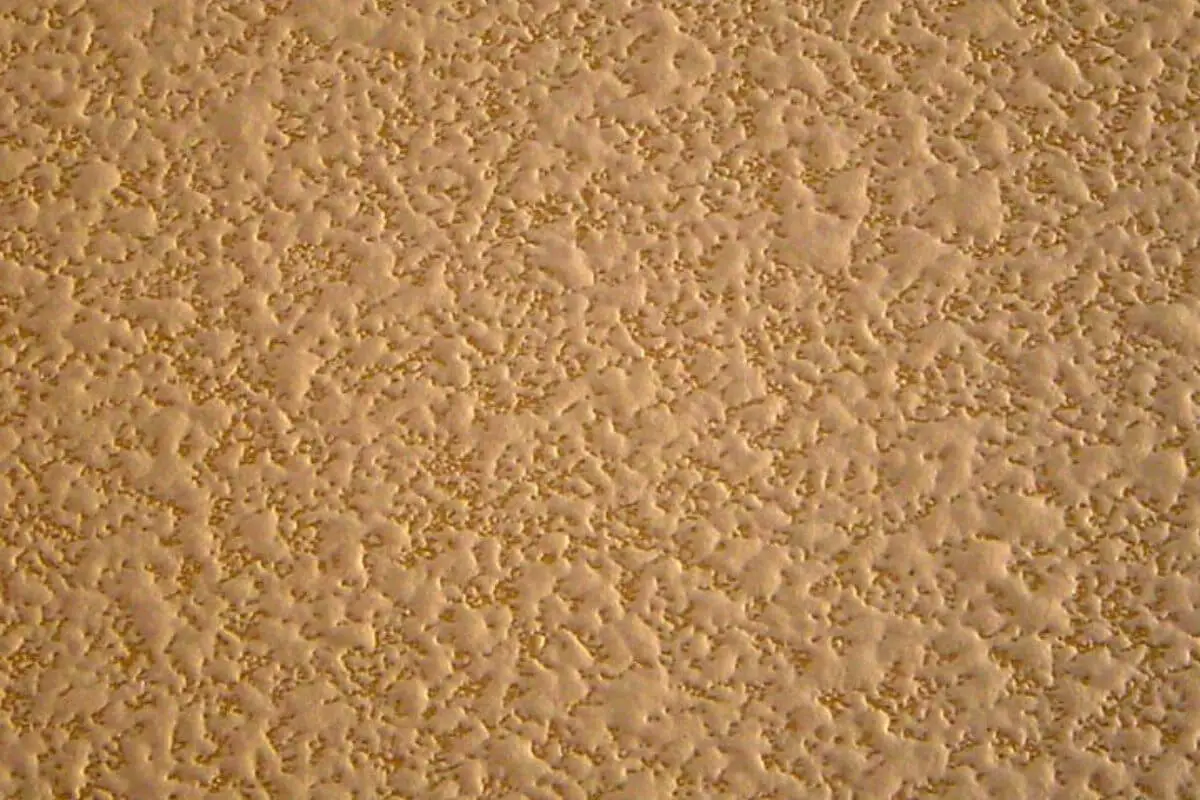Introduction
When it comes to interior wall finishes, homeowners have several options to choose from. Two popular choices are orange peel texture and smooth finish. Each style offers a unique aesthetic and brings its own set of advantages. In this article, we will explore the differences between orange peel texture and smooth finish, considering their appearance, application process, maintenance, and suitability for different rooms. By the end of this comparison, you will be well-informed to make the best decision for your home’s interior walls.
What is Orange Peel Texture?
Orange peel texture is a popular wall finish that creates a slightly bumpy surface resembling the texture of an orange peel. It is achieved by spraying or rolling thinned drywall compound onto the walls and then using a trowel to create the desired texture. The result is a subtle and visually interesting surface that adds depth to the walls.
What is Smooth Finish?
A smooth finish is exactly what it sounds like—a wall finish with a flat and smooth surface. To achieve this look, drywall joint compound is applied and carefully smoothed out with a trowel or sander until the entire surface is even and free of imperfections. Smooth finishes are known for their clean and modern appearance.
Appearance and Aesthetic Appeal
The primary difference between orange peel texture and smooth finish lies in their appearance. Orange peel texture adds a subtle texture that can help mask minor imperfections in the wall surface. It is a popular choice for contemporary and traditional interior designs. On the other hand, a smooth finish provides a clean, sleek, and sophisticated look that suits modern and minimalist aesthetics.
Application Process and Complexity
Orange peel texture application requires skill and experience to achieve consistent results. The process involves spraying or rolling the texture compound, followed by manual manipulation with a trowel. Achieving a uniform texture can be challenging, and variations may occur. Smooth finish application also demands skill and attention to detail, but the process involves more precise smoothing and sanding to create an even surface.
Maintenance and Longevity
Both orange peel texture and smooth finish are relatively easy to maintain. Regular cleaning can be done with a soft cloth or sponge. However, in the case of any damage or repairs, a smooth finish is typically easier to patch seamlessly, while orange peel texture may require more effort to match the existing texture.
Suitability for Different Rooms
The choice between orange peel texture and smooth finish can depend on the room’s function and design. Orange peel texture works well in areas where a subtle texture is desired, such as living rooms, hallways, and bedrooms. Its ability to hide imperfections makes it ideal for high-traffic spaces. Smooth finishes, with their sleek and elegant appearance, are often preferred in formal areas like dining rooms and offices or in contemporary-styled spaces.
Cost Comparison
In general, orange peel texture is more cost-effective than achieving a perfectly smooth finish. The labor and materials required for orange peel texture are generally less expensive. However, the cost difference may vary depending on the size of the project and the labor rates in different regions.

Which Wall Texture is Right for You?
Choosing between orange peel texture and smooth finish comes down to personal preference, design style, and the condition of your walls. Consider the overall aesthetic you want to achieve and whether you prefer a textured look or a sleek, modern appearance.
Conclusion
Both orange peel texture and smooth finish offer distinct visual effects and advantages. Orange peel texture adds a subtle texture that masks imperfections and works well in various rooms. Smooth finishes, on the other hand, deliver a clean and contemporary appearance, ideal for specific design preferences. Ultimately, the right choice depends on your individual taste and the ambiance you wish to create in your home.
FAQs
1. Can I change the wall texture from orange peel to smooth or vice versa?
Yes, it is possible to change the wall texture from orange peel to smooth or vice versa. However, the process involves significant effort, including scraping off the existing texture and applying the new one.
2. Will a smooth finish show more imperfections on my walls?
A smooth finish can be less forgiving of wall imperfections compared to orange peel texture. It requires a well-prepared wall surface to achieve the desired smoothness.
3. Is either texture more durable than the other?
Both textures are relatively durable, but orange peel texture’s slight texture may better hide minor wear and tear over time.
4. Can I paint over both types of wall texture?
Yes, both orange peel texture and smooth finish can be painted over once they have been properly prepared and primed.
5. Which texture is more suitable for a traditional-style home?
Orange peel texture can complement traditional-style homes, adding a subtle texture that enhances the overall ambiance.
6. Can I apply orange peel texture or smooth finish on my own, or should I hire a professional?
While it is possible to attempt DIY application, achieving consistent and satisfactory results may be challenging, especially for orange peel texture. For the best outcome, hiring a professional painter or drywall specialist is recommended.
7. How long does it take to apply orange peel texture or achieve a smooth finish on an average-sized room?
The time required for application depends on various factors, including the size of the room, the condition of the walls, and the expertise of the person performing the job. Generally, applying orange peel texture may take longer due to the manual manipulation needed for texture consistency.
8. Can I mix and match both textures in different rooms of my home?
Yes, you have the flexibility to mix and match wall textures in different rooms. This can create interesting visual contrasts and cater to the specific design needs of each space.
9. Do textured walls require any special care or cleaning compared to smooth walls?
Textured walls, especially orange peel texture, may trap more dust than smooth walls. Regular dusting or vacuuming with a soft brush attachment can help keep textured walls clean and free from dust buildup.
10. Will either texture affect the overall acoustics of a room?
Both textures can have minimal impact on room acoustics. However, some homeowners believe that textured walls may slightly reduce sound reflections compared to completely smooth walls. For significant sound improvement, acoustic treatments would be more appropriate.



